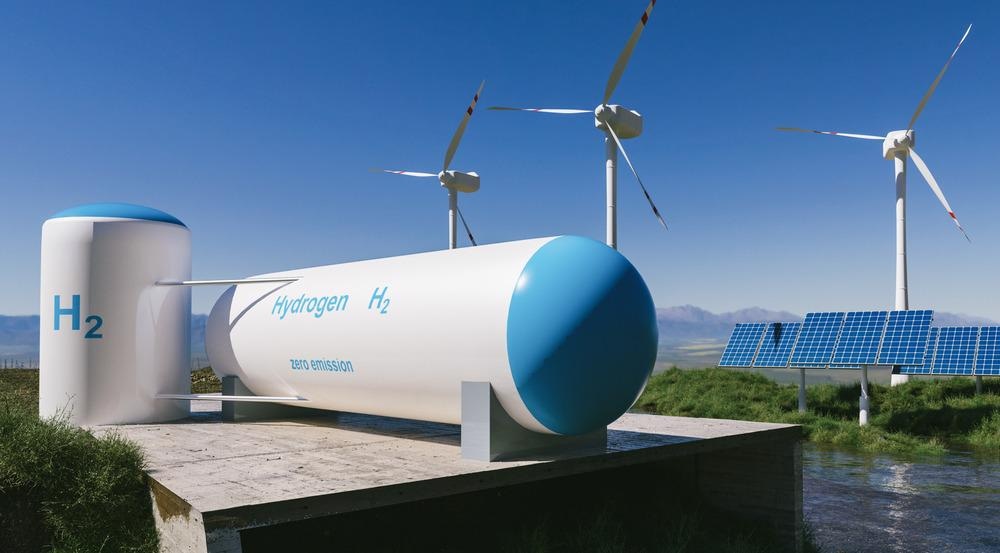As the world seeks to move away from fossil fuels, electric vehicles are becoming more important. In the near future, it is expected that clean unmanned vehicles will take to the roads, replacing old, gas-fueled vehicles. Not only will these vehicles help to drastically reduce the emissions of the transportation sector, but they will also help tackle another important issue - road accident deaths. Spectronik’s hydrogen PEM fuel cells will help to facilitate the adoption of electric vehicles by addressing some of the common concerns associated with switching from traditional vehicles.

Image Credit: Alexander Kirch/Shutterstock.com
Addressing Climate Change and Road Traffic Accidents with Sustainable Unmanned Vehicles
Over recent years, the field of autonomous vehicles has grown, with research and development gaining speed and drawing in much funding. It is predicted that autonomous vehicles may be widely available commercially within the next decade. While a lot of media coverage on these developments focuses on the novelty and excitement of this futuristic technology, the importance and significance of establishing this sector lie in its ability to tackle two very different challenges the world is currently facing: climate change and road traffic accidents.
Autonomous vehicles have the potential to make roads infinitely safer by removing driver error. Given that 1.3 million people die every year in road traffic accidents and that these accidents are the major cause of death worldwide in children and young adults aged 5-29 years, it is vitally important that strategies are implemented to reduce this number and make roads safer. The United Nations (UN) General Assembly recently set the target of halving deaths and injuries caused by road traffic accidents by 2030. Autonomous vehicles offer a method of helping the world meet this goal by using autonomous vehicle technology and artificial intelligence (AI) to eradicate driver error.
Autonomous vehicles present an opportunity to help reduce the emissions related to road traffic. The entire transport sector is currently responsible for just over a fifth (21%) of total global emissions. Road transport accounts for 75% of transportation emissions, meaning that it is accountable for 15% of total carbon dioxide (CO2) emissions, with cars and buses accounting for 45.1% of this.
There is a clear opportunity to help the world tackle climate change by reducing the volume of emissions added into the atmosphere by vehicles. Clean unmanned vehicles encourage the shift to electric vehicles and use algorithms to eliminate congestion (where cars sit stationary but still emit vast quantities of CO2 due to leaving their engines on).
Numerous important advancements have been made in recent years that are helping to advance the field of sustainable unmanned vehicles. Here, we focus on new hydrogen fuel cell technology developed by Singapore-based manufacturer, Spectronik. The company has launched a range of hydrogen proton-exchange membrane (PEM) fuel cells that help to address some of the barriers that autonomous vehicles face.
The Benefits of PEM Fuel Cells
Spectronik has developed a range of hydrogen PEM fuel cells for use in electric and hybrid vehicles such as self-driving vehicles. These PEM fuel cells help overcome the current barriers facing the widespread adoption of electric vehicles and the future adoption of autonomous cars.
when considering switching to an electric vehicle, consumers focus on several factors such as cost, ease and speed of recharging, and driving range. While the public concept of electric vehicles is evolving, consumers often hold the belief that charging vehicles takes a long time, that it is difficult to find charging stations, and the driving range of such vehicles is not sufficient to make long journeys.
Spectronik’s hydrogen PEM fuel cells overcome these concerns. Its technology offers a clean electric power system that provides long driving ranges and fast recharging with minimal downtime. In comparison with lithium batteries, PEM fuel cell-powered vehicles can achieve three times the driving range. They also allow for less downtime while recharging, as this can be done in just five minutes. Finally, PEM fuel cell-powered vehicles promote a future of sustainable unmanned vehicles, with their reusable cell architecture making a circular economy possible, resulting in a 70% reduction in operation costs. In addition to this, hydrogen PEM fuel cells are emissions-free, a vitally important factor to a world that is moving away from fossil fuels.
It is likely that technological advancements in fuel cell technology, such as those offered by Spectronik, will play a vital role in encouraging the switch from traditional vehicles to electric ones. They will also help enhance the sustainability of unmanned vehicles, particularly in that the cells can easily be recycled, an issue that is currently causing people to question the true environmental impact of electric vehicles.
References and Further Reading
World Health Organization. (2021) Road traffic injuries. [Online] Available at: https://www.who.int/news-room/fact-sheets/detail/road-traffic-injuries
Acheampong, R., Cugurullo, F., Gueriau, M. and Dusparic, I. (2021) Can autonomous vehicles enable sustainable mobility in future cities? Insights and policy challenges from user preferences over different urban transport options. Cities, 112, p.103134. https://www.sciencedirect.com/science/article/abs/pii/S0264275121000329
Spectronik. [Online]. Available at: https://spectronik.com
Weber, A., Balasubramanian, S. and Das, P., 2012. Proton Exchange Membrane Fuel Cells. Fuel Cell Engineering, pp.65-144. https://www.sciencedirect.com/science/article/abs/pii/B9780123868749000038
Disclaimer: The views expressed here are those of the author expressed in their private capacity and do not necessarily represent the views of AZoM.com Limited T/A AZoNetwork the owner and operator of this website. This disclaimer forms part of the Terms and conditions of use of this website.